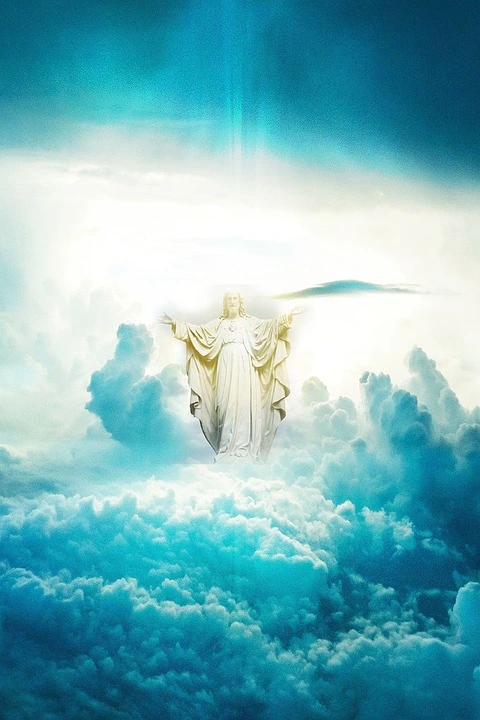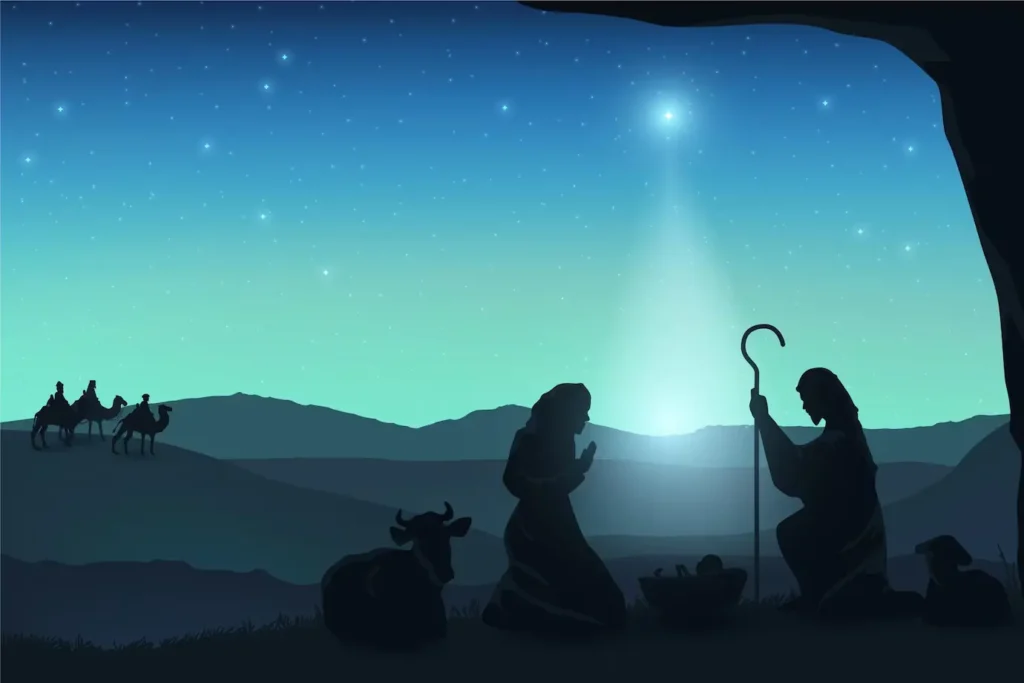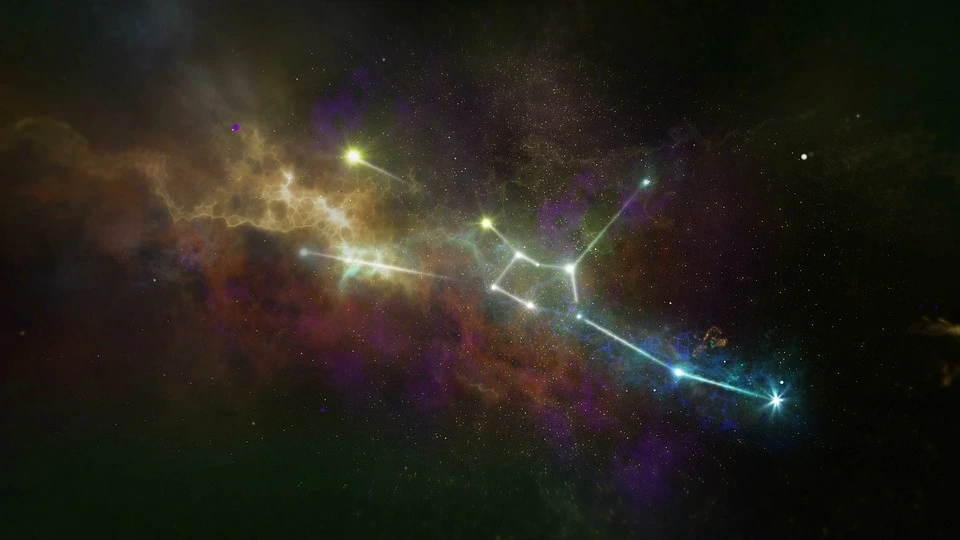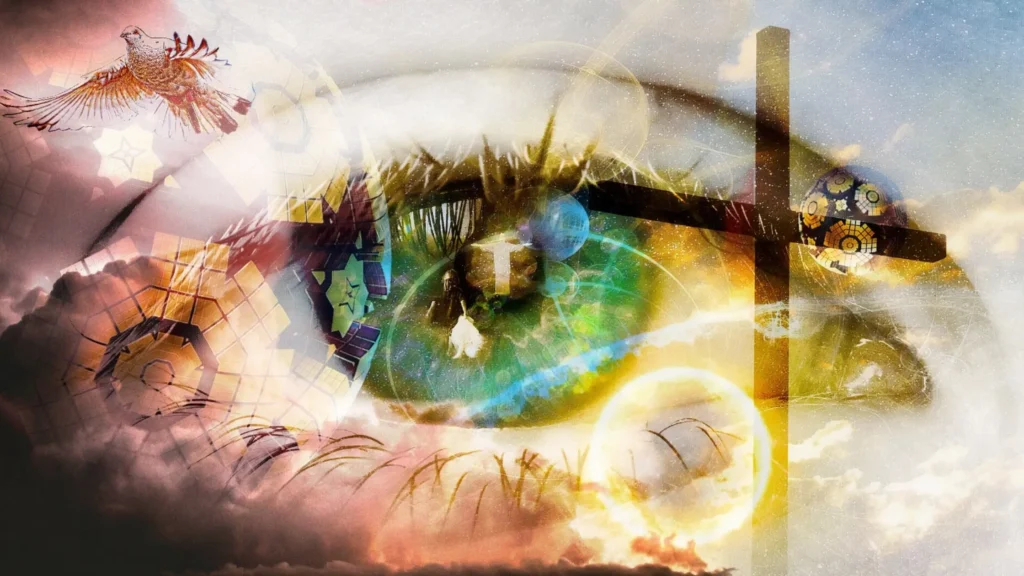The Rapture Theory, the Tribulation, and the Return of the Son of Man

Introduction
In the realm of eschatology, the study of end times, the concepts of the Rapture, the Tribulation, and the Return of the Son of Man have captured the imagination of believers and intrigued theologians for centuries. These topics have been the subject of various interpretations and debates within the Christian faith. In this article, we will explore into each of these fascinating aspects, exploring their meanings, significance, and the different viewpoints surrounding them.
Table of Contents
- Understanding the Rapture
- Definition of the Rapture
- Biblical Basis for the Rapture
- Differing Interpretations
- Pre-Tribulation Rapture Theory
- Explanation of Pre-Tribulation Rapture
- Scriptural Support
- Criticisms and Counterarguments
- Mid-Tribulation and Post-Tribulation Views
- Mid-Tribulation Rapture Theory
- Post-Tribulation Rapture Theory
- Comparing Different Perspectives
- The Tribulation Period
- Definition and Duration
- Events during the Tribulation
- Tribulation in Various Religious Beliefs
- The Second Coming of Christ
- Biblical Prophecies of Christ’s Return
- Signs and Indicators
- Preparing for His Coming
- The Millennial Reign
- Meaning and Interpretations
- A Period of Peace and Justice
- Understanding the 1000 Years
- The Son of Man
- Identifying the Son of Man
- His Role in the Rapture and Tribulation
- Son of Man in Other Religious Traditions
- Comparing Rapture and Resurrection
- Resurrection of the Dead
- Relationship with the Rapture
- Different Beliefs Among Christians
- Debates and Controversies
- Historical Perspectives
- Modern-Day Debates
- Maintaining Unity Amidst Differences
- Perplexity of Eschatological Beliefs
- The Mystery of the Unknown
- Embracing Diverse Views
- Finding Common Ground
- Burstiness in End Times Theology
- Explosive Growth of End Times Interest
- Media and End Times Sensationalism
- Discerning Genuine Teachings
- A Personal Journey with End Times
- Individual Perspectives
- Navigating Uncertainties
- The Hope of Christ’s Return
- Living with Expectancy
- Impact on Daily Life
- Fostering Hope and Faith
- Preparing Spiritually
- Conclusion
- Embracing the Mystery
- Unity in Diversity of Beliefs
- The Blessed Hope of Christ’s Return

Understanding the Rapture
The concept of the Rapture refers to the belief that followers of Jesus Christ will be suddenly and miraculously caught up to meet Him in the air. This event is commonly associated with the Second Coming of Christ and is believed by some to occur before the Tribulation period. The origin of the term “Rapture” can be traced back to the Latin word “raptus,” meaning “caught up” or “taken away.”
Biblical Basis for the Rapture
Supporters of the Rapture point to various biblical passages to justify their beliefs. One of the key verses is found in 1 Thessalonians 4:17, which states, “After that, we who are still alive and are left will be caught up together with them in the clouds to meet the Lord in the air. And so we will be with the Lord forever.”
Differing Interpretations
Despite its popularity among certain Christian groups, the concept of the Rapture is not universally accepted. Some scholars interpret the biblical verses differently, suggesting that the Rapture may occur simultaneously with Christ’s visible return at the end of the Tribulation period.
Pre-Tribulation Rapture Theory

The Pre-Tribulation Rapture theory posits that the Rapture will happen before the start of the Tribulation period. According to this view, believers will be taken up to heaven to be spared from the intense trials and tribulations that will occur during that time.
Explanation of Pre-Tribulation Rapture
Advocates of this theory believe that God’s nature is one of love and not wrath, and, therefore, He will protect His followers from the wrath to come. They argue that the absence of the Church during the Tribulation aligns with God’s pattern of deliverance for His people throughout history.
Scriptural Support
Supporters of the Pre-Tribulation Rapture theory point to passages like Revelation 3:10, where believers are promised to be kept from the “hour of trial” that is to come upon the whole world.
Criticisms and Counterarguments
Critics argue that the concept of a Pre-Tribulation Rapture is a relatively recent theological development and not explicitly stated in the Bible. They suggest that the idea of suffering and persecution for the sake of Christ is a consistent biblical theme, and believers should be prepared to face challenging times.
Mid-Tribulation and Post-Tribulation Views

In contrast to the Pre-Tribulation view, other interpretations place the Rapture at different points during the Tribulation period. The Mid-Tribulation Rapture theory suggests that the Rapture will occur halfway through the Tribulation, while the Post-Tribulation Rapture theory asserts that it will happen at the end.
Mid-Tribulation Rapture Theory
Supporters of the Mid-Tribulation Rapture theory believe that believers will be taken up to heaven at the midpoint of the Tribulation when the Antichrist’s rule becomes more oppressive. They point to passages like Daniel 9:27, which mentions the midpoint of the Tribulation as a significant event.
Post-Tribulation Rapture Theory
The Post-Tribulation Rapture theory contends that the Rapture and the Second Coming of Christ are simultaneous events. This view suggests that believers will endure the entire Tribulation period but will be immediately caught up to meet Christ as He returns to Earth.
Mark, Mathew and Luke quotes, “Immediately after the tribulation of those days, the sun will be darkened, and the moon will not give its light; the stars will fall from the sky, and the powers of the heavens will be shaken. At that time, the sign of the Son of Man will appear in heaven, and all the tribes of the earth will mourn. They will see the Son of Man coming on the clouds of heaven with power and great glory. And He will send out His angels with a loud trumpet call, and they will gather His elect from the four winds, from one end of the heavens to the other.” (Mark 13:24-27, Matthew 24:26-31, Luke 21:25-28)
Truly I tell you, some who are standing here will not taste death before they see the Son of Man coming in His kingdom.” (Matthew 16:28)
Comparing Different Perspectives

Each perspective presents unique theological challenges and scriptural support. While the narrative is dominated by Christians the timing of the Rapture remains a topic of debate, the common thread among Christians is the anticipation of Christ’s return and the importance of being spiritually prepared.
Another return, or the only return? The term second coming is not written in the Bible or the final return; it’s just topical suggestion.
The Son of Man’s Sign can be seen in heaven or has existed forever but was ignored.
Signs and trumpets. Another nativity scene? The magi (elect are gathered) come to welcome his birth.
Other religions have a different version of the return of the Son Of Man.
The Tribulation Period

The Tribulation period, often referred to as the Great Tribulation, is a significant period of distress and upheaval prophesied in various religious texts. In Christian eschatology, it is believed to be a time of unparalleled suffering and divine judgment before Christ’s Second Coming.
Definition and Duration
The duration of the Tribulation period is a topic of speculation. Some believe it will last for seven years, based on interpretations of Daniel’s prophecy. Others view it as a symbolic period, emphasizing its intensity rather than a specific time frame.
Events during the Tribulation
The Tribulation is associated with various catastrophic events, such as natural disasters, plagues, wars, and the rise of the Antichrist. It is believed that this time will be marked by moral decay and spiritual deception on a global scale.
Tribulation in Various Religious Beliefs
While the concept of a future period of tribulation is most prominent in Christian eschatology, similar ideas can be found in other religious traditions. For example, in Islamic eschatology, there is the concept of “Fitna,” which refers to a time of turmoil and tribulation.
The Second Coming of Christ
Signs and Indicators

Throughout history, believers and theologians have sought to interpret the signs of Christ’s return. While Jesus emphasized that no one knows the exact time, He encouraged His followers to discern the signs of the times.
Preparing for His Coming
The Second Coming of Christ is a central tenet of Christian faith. It refers to the anticipated return of Jesus in glory and power to establish His kingdom on Earth.
The anticipation of Christ’s return serves as a motivating factor for believers to lead righteous and faithful lives. The New Testament exhorts Christians to be vigilant and ready for the Son of Man’s unexpected arrival.
The Millennial Reign
The Millennial Reign, also known as the Millennial Kingdom, refers to the prophesied 1000-year reign of Christ on Earth following the Tribulation. The belief in this period is based on passages like Revelation 20:4, which mentions a thousand-year reign of the saints with Christ.
Meaning and Interpretations
Interpretations of the Millennial Reign vary, with some understanding it as a literal thousand-year period and others interpreting it symbolically as a lengthy but unspecified period of time or Kingdoms gradually conquer the earth for a thousand years.
A Period of Peace and Justice
During the Millennial Reign, it is believed that the world will experience unprecedented peace, prosperity, and harmony, with Christ ruling with justice and righteousness.
Understanding the 1000 Years
A thousand years is not a very long time until something else happens. The symbolic significance of the 1000-year duration has led to diverse interpretations throughout Christian history. Some see it as a complete and perfect period, while others view it as a literal timeframe.
The Son of Man

The term “Son of Man” is used repeatedly in the Bible, both in the Old Testament and the New Testament. It is a title often used by Jesus Christ when referring to Himself. Also, the prophets in the Old Testament were called the Son of Man.
Identifying the Son of Man
There is much confusion about it. The title “Son of Man” emphasizes Jesus’ is a Son of a Man and or fulfillment of the sign to come. It also connects Him to the Messianic prophecies of the Old Testament.
His Role in the Rapture and Tribulation
The Son of Man plays a central role in eschatological events, including the Rapture, the Tribulation, and His Second Coming. He is depicted as the central figure in God’s plan for the culmination of history of Mankind.
Son of Man in Other Religious Traditions
The concept of the Son of Man can be traced back to ancient religious texts, including the Book of Daniel. While it is most prominent in Christian theology, similar ideas can be found in Judaism and other faiths.
Comparing Rapture and Resurrection
The concepts of the Rapture and the Resurrection are closely related but distinct events in Christian eschatology.
Resurrection of the Dead
The Resurrection involves the raising of all the dead, both believers and non-believers, to face judgment before God. Some believe this at the end of time of 50,000 years of Earths existence.
Relationship with the Rapture
While the Rapture involves the catching up of living believers to meet Christ, the Resurrection includes the transformation of the bodies of deceased believers.
Different Beliefs Among Christians
Various theological traditions within Christianity hold differing views on the timing and nature of the Resurrection and its relationship with the Rapture.
Debates and Controversies
Throughout history, the interpretations of eschatological events have led to debates and controversies within the Christian community. The rapture has caused Christian cults to make it the center of their beliefs, which has had negative consequences.
Historical Perspectives
From the early Church Fathers to the Reformers and modern theologians, the topic of eschatology has been a subject of diverse opinions.
Modern-Day Debates
In contemporary times, different prophetic interpretations and end-times scenarios have given rise to heated discussions among Christians.
Maintaining Unity Amidst Differences
While eschatological beliefs can be significant, it is essential for believers to maintain unity and mutual respect in areas of disagreement.
Perplexity of Eschatological Beliefs
Eschatology deals with the mysterious and unknown aspects of the future, leading to various interpretations and perspectives.
The Mystery of the Unknown
The complex and symbolic nature of eschatological prophecies makes it challenging to arrive at a singular and definitive understanding.
Embracing Diverse Views
Rather than promoting division, embracing diverse views can enrich our understanding of the vastness of God’s plan.
Finding Common Ground
While some eschatological details may remain uncertain, the central message of hope in Christ’s return unites believers across various traditions.
Burstiness in End Times Theology

In recent times, interest in end times and eschatology has experienced explosive growth, fueled by various factors.
Explosive Growth of End Times Interest
Books, movies, and online content have contributed to a surge in public fascination with end times events.
Media and End Times Sensationalism
The media’s portrayal of apocalyptic scenarios has added to the burstiness of end times discussions.
Discerning Genuine Teachings
Amidst the vast amount of content, believers are encouraged to discern the credibility and biblical accuracy of end times teachings.
A Personal Journey with End Times
For individuals, eschatological beliefs can have a profound impact on their faith and daily lives.
Individual Perspectives
Each person’s understanding of end times is shaped by their upbringing, spiritual experiences, and study of the Scriptures.
Navigating Uncertainties
Eschatology can be a source of both comfort and confusion, prompting believers to seek clarity and understanding.
The Hope of Christ’s Return
Above all, the hope of Christ’s return provides assurance and anticipation for believers, inspiring them to live with purpose and faith.
Living with Expectancy
The belief in Christ’s imminent return influences how believers approach life and their relationship with God.
Impact on Daily Life
Living with expectancy motivates believers to prioritize their faith, love others, and fulfill their God-given purpose.
Fostering Hope and Faith
The hope of Christ’s return serves as an anchor during challenging times, strengthening believers’ faith and perseverance.
Preparing Spiritually
A vital aspect of living with expectancy is continually growing in faith, seeking spiritual maturity, and being ready to meet the Lord.
Conclusion
In the realm of eschatology, the topics of the Rapture, the Tribulation, and the Return of the Son of Man have stirred profound contemplation and fervent discussions among believers. While the specifics of these events may remain uncertain, the central message of hope and anticipation of Christ’s return unites Christians worldwide. As we navigate the complexities of end times theology, let us remember the importance of unity, love, and our shared faith in the Son of Man.
FAQs
- What is the Rapture, and when will it occur? The Rapture refers to the belief that followers of Christ will be caught up to meet Him in the air. Views on the timing of the Rapture differ, with some believing it will occur before the Tribulation and others placing it during or after the Tribulation.
- What is the Tribulation period? The Tribulation period is a time of great distress and upheaval prophesied in Christian eschatology. It is believed to be a period of divine judgment and testing before Christ’s Second Coming.
- How does the Millennial Reign relate to the Tribulation? The Millennial Reign is believed to follow the Tribulation period, representing a time of peace and righteousness with Christ ruling on Earth for 1000 years.
- What is the significance of the Son of Man in end times events? The Son of Man plays a central role in eschatological events, including the Rapture, the Tribulation, and His Second Coming. He is seen as the central figure in God’s plan for the culmination of human history.
- Why is it essential to maintain unity amidst differing eschatological beliefs? While eschatological beliefs are significant, the central message of hope in Christ’s return should unite believers across various perspectives. Embracing diversity can enrich our understanding of God’s vast plan and encourage mutual respect within the Christian community.




